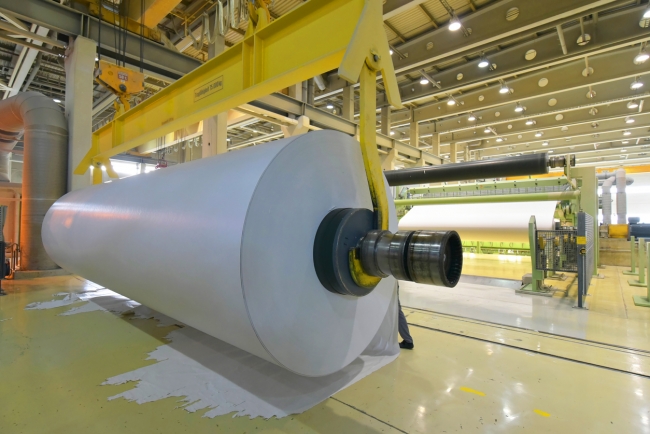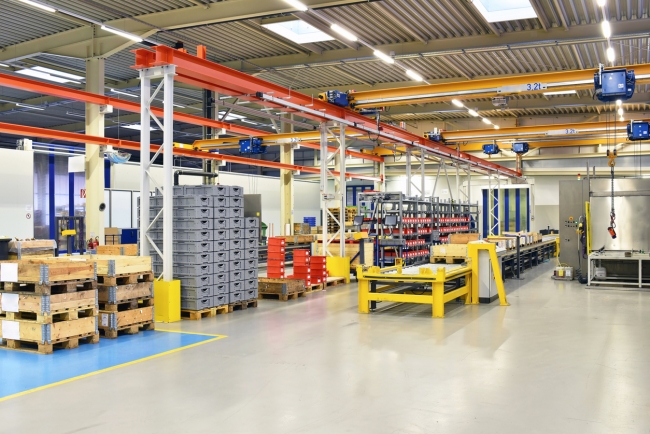4 minute read
Manufacturing output growth firm, new orders up but costs rise sharply shows CBI survey
UK manufacturing output volumes growth remained firm compared with the long-run average in the quarter to January, albeit at a slower pace than in December, while costs grew at the quickest pace for decades, according to the latest quarterly CBI Industrial Trends Survey.
The survey of 236 companies found that output volumes increased in 10 out of 17 sub-sectors, with growth mostly driven by the food, drink & tobacco sub-sector. Manufacturers expect output growth to pick up next quarter.
The manufacturing sector continues to face intense cost and price pressures, with firms reporting average costs in the quarter to January growing at their quickest rate since April 1980. Firms expect costs to grow at a similar pace over the next three months.
Increasing costs are continuing to feed into higher prices, with average domestic prices growing near previous quarter’s record pace and export price growth at its quickest since April 1980. Both domestic and export price growth are expected to accelerate in the next quarter.

UK manufacturing output volumes and new orders continue to grow, but costs have risen sharply according to the latest CBI Industrial Trends survey – manufacturers expect output growth to pick up in the next quarter / Picture: Getty/iStock
Total new orders in the quarter to January grew at a faster pace compared to October, with the acceleration driven by faster growth in domestic and export orders. Manufacturers expect total new orders growth to slow in the next quarter, reflecting an easing of domestic and export orders.
Supply issues continue to bite, with the share of firms citing skilled labour shortages as a factor likely to limit output next quarter rising to its highest since October 1973 and concerns regarding other labour near the previous quarter’s record high. Meanwhile, the proportion of firms citing materials/components availability as a potential limiting factor declined from last quarter’s multi-decade high but remained elevated by historical standards.
Investment intentions for the next 12 months (compared to the previous 12) for plant & machinery reached their strongest April 1988, with intentions for training & retraining also strengthening. Firms expect to increase capital spending on product & process innovation to a similar extent as the previous quarter.
Rain Newton-Smith, CBI chief economist, said: “Global supply chain challenges are continuing to impact UK firms, with our survey showing intense and escalating cost and price pressures. More positively, it’s good to see firms looking to invest more in training and retraining as labour shortages continue to bite. And planned increases in spending on plant and machinery is a welcome sign of much-needed strengthening in business investment. Further fiscal measures to get more firms investing will be needed to set the UK on a long-term path to sustainable growth.
“Meanwhile, against the backdrop of rising energy prices, which are adding to inflationary pressures, short-term action is needed from the UK government to find urgent solutions for firms that are struggling. Longer term, energy market reforms are required to build resilience against future energy price shocks and create markets for renewable technologies, assisting net zero ambitions.”

Investment intentions for the next 12 months (compared to the previous 12) for plant & machinery reached their strongest April 1988 / Picture: Getty/iStock
Tom Crotty, group director at INEOS and chair of the CBI Manufacturing Council, added: “It is no surprise that manufacturers remain acutely concerned about the impact of labour shortages on their business. Alongside this, manufacturers continue to face rising energy costs and broader inflationary pressures amid ongoing supply chain disruptions. The government must work together with businesses to tackle these challenges as we begin to feel the effects of the cost-of-living crunch.
“On a more positive note, output continued to increase across most sub-sectors. But we must continue to push the government for more strategic direction for the sector to initiate further sustainable growth.”
Numbers employed in the sector grew at a slower pace compared to October, but growth is expected to pick up in the next quarter.
Business optimism dipped in the quarter to January, as did export sentiment.
Highlights from the latest quarterly Industrial Trends Survey:
Output
• Output volumes in the quarter to January grew at slower pace to December (+14% from +29% in December, long-run average of +3%).
• Output increased in 10 out of 17 sub-sectors, with headline growth mostly driven by the food, drink & tobacco sub-sector.
• Manufacturers expect output growth to pick up in the next quarter (+23%).
• The proportion of firms citing materials/components availability as a factor likely to limit output next quarter (55%) declined from last quarter’s multi-decade high (64%, highest since January 1975).
Orders
• Domestic orders growth (+32% from +21% in October) quickened, as did export orders growth – to its fastest since July 2018 (+19% from +10% in October).
Headcount
• Numbers employed in the quarter to January (+10%) – a slower pace to October (+24%) but headcount is expected to grow at a faster pace next quarter (+38%).